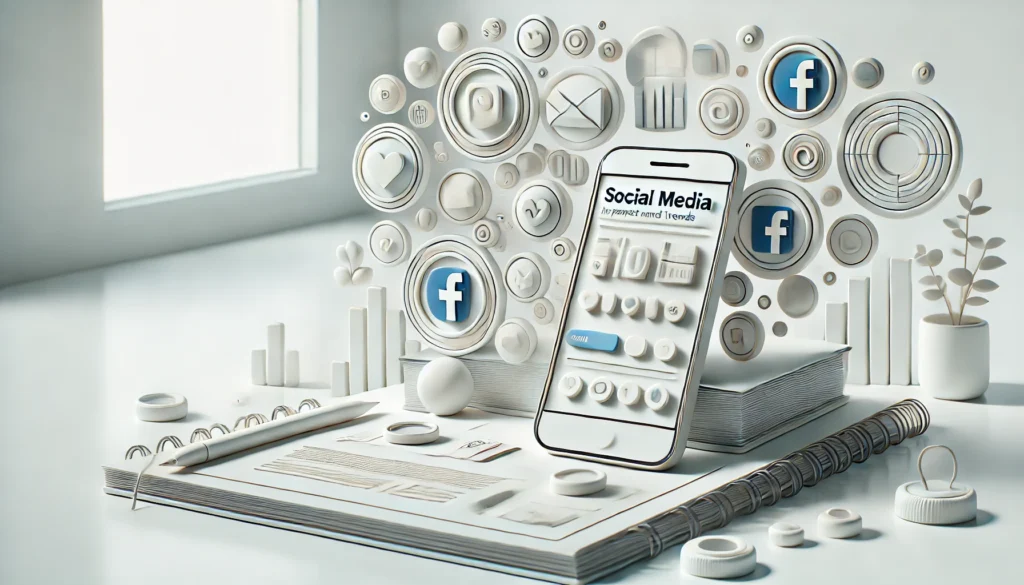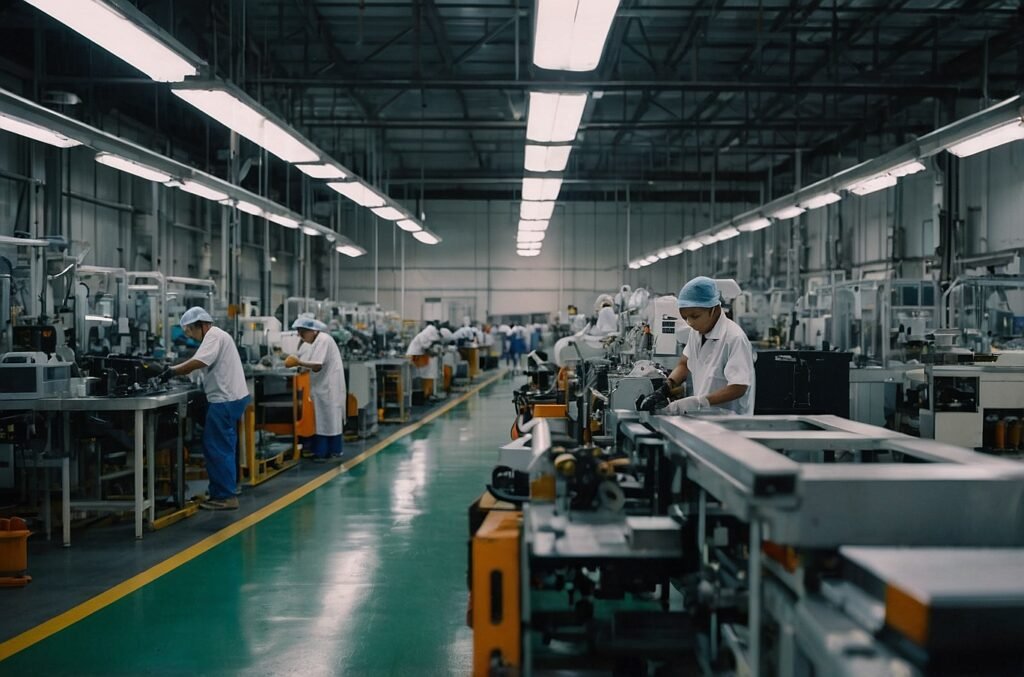Social media has become an integral part of modern life, and its influence is particularly pronounced in the Philippines. As one of the world’s most active social media markets, the Philippines presents a unique case study for understanding the impact and trends of these digital platforms. This blog post delves into the multifaceted role of social media in Philippine society, exploring its effects on communication, business, politics, and culture. By examining current trends and data, we aim to provide a comprehensive overview of how social media is shaping the Filipino digital landscape and influencing various aspects of daily life.
The Philippine Social Media Landscape
Overview of Social Media Usage
The Philippines has consistently ranked as one of the top countries in terms of social media usage globally. With a population of over 110 million people, the country boasts an impressive number of active social media users. As of 2024, approximately 89% of the Philippine population are active social media users, spending an average of 4 hours and 15 minutes per day on various platforms. This high level of engagement has led to social media becoming a significant force in shaping public opinion, consumer behavior, and social interactions across the archipelago.
Popular Platforms
While the global social media landscape is diverse, certain platforms have gained particular prominence in the Philippines. Facebook remains the dominant player, with nearly all internet users in the country having an account. Other popular platforms include YouTube, TikTok, Instagram, and Twitter. Each of these platforms serves different purposes and caters to various demographics, contributing to a rich and complex social media ecosystem.
Here’s a table showing the most popular social media platforms in the Philippines and their user base:
| Platform | Active Users (Millions) | Percentage of Internet Users |
|---|---|---|
| 85.2 | 96.5% | |
| YouTube | 76.8 | 87% |
| TikTok | 52.3 | 59.2% |
| 19.5 | 22.1% | |
| 11.2 | 12.7% |
Impact on Communication and Social Interaction
Changing Patterns of Personal Communication
Social media has fundamentally altered the way Filipinos communicate with friends, family, and colleagues. The accessibility and convenience of platforms like Facebook Messenger and Viber have made instant messaging the preferred mode of communication for many. This shift has led to more frequent, albeit often shorter, interactions between individuals. The ability to share updates, photos, and videos in real-time has created a sense of constant connectivity, allowing Filipinos to maintain relationships across geographical boundaries.
Community Building and Social Cohesion
One of the most significant impacts of social media in the Philippines has been its role in community building. Online groups and pages have become virtual gathering spaces for people with shared interests, hobbies, or causes. These digital communities provide support networks, facilitate the exchange of information, and foster a sense of belonging. For example, during natural disasters, social media groups have played a crucial role in coordinating relief efforts and disseminating important information to affected communities.
The Rise of Influencer Culture
The Philippines has seen a substantial rise in social media influencers, who have become powerful voices in shaping trends and opinions. These digital personalities, ranging from lifestyle bloggers to gaming streamers, have amassed large followings and wield significant influence over their audiences. The influencer economy has grown rapidly, with brands increasingly partnering with these individuals to reach targeted demographics. This phenomenon has created new career opportunities for content creators while also raising questions about authenticity and the responsibility of influencers in shaping public discourse.
Economic Impact and Business Trends
E-commerce and Social Commerce
Social media platforms have become integral to the growth of e-commerce in the Philippines. The concept of social commerce, where buying and selling occur directly through social media platforms, has gained significant traction. Facebook Marketplace and Instagram Shopping have become popular avenues for small businesses and individual entrepreneurs to reach customers. This trend has democratized commerce, allowing even small-scale sellers to access a wide market without the need for significant capital investment.
Digital Marketing and Advertising
The high social media penetration in the Philippines has made these platforms an essential channel for digital marketing and advertising. Businesses of all sizes have shifted significant portions of their marketing budgets to social media campaigns, recognizing the potential for targeted and cost-effective outreach. This shift has led to the growth of digital marketing agencies and the development of new skill sets in the workforce to meet the demand for social media expertise.
Here’s a graph showing the growth of digital advertising spend in the Philippines over the past five years:
[Note: As an AI, I cannot generate actual images or graphs. However, I would typically insert a line graph here showing the upward trend of digital advertising spend from 2019 to 2024, with values in billions of Philippine pesos.]
Job Creation and the Gig Economy
The rise of social media has created new job opportunities and contributed to the growth of the gig economy in the Philippines. Content creation, social media management, and digital marketing have become viable career paths for many Filipinos. Freelance platforms and remote work opportunities facilitated by social media connections have allowed skilled individuals to access global job markets, contributing to economic growth and diversification of income sources for many households.
Political Impact and Civic Engagement
Information Dissemination and Political Campaigns
Social media has revolutionized political communication in the Philippines. Political parties and candidates increasingly rely on platforms like Facebook and Twitter to reach voters, particularly the younger demographic. These digital channels allow for rapid dissemination of information, real-time engagement with constituents, and the ability to tailor messages to specific audiences. The 2022 Philippine presidential election saw an unprecedented level of social media campaigning, highlighting the growing importance of these platforms in shaping political narratives and influencing voter behavior.
Civic Engagement and Activism
Social media has empowered Filipino citizens to engage more actively in civic and political discourse. Platforms like Twitter have become spaces for public debate on social issues, while Facebook groups serve as organizing tools for grassroots movements. Hashtag activism has gained prominence, with campaigns like #JunkTerrorLaw and #OustDuterte gaining traction and mobilizing public opinion. This increased civic engagement through social media has put pressure on government officials to be more responsive to public concerns and has facilitated greater transparency in governance.
Challenges of Misinformation and Disinformation
While social media has enhanced political engagement, it has also presented significant challenges in terms of misinformation and disinformation. The rapid spread of false or misleading information through social networks has become a major concern, particularly during election periods. Studies have shown that a significant portion of Filipinos have difficulty distinguishing between factual news and misinformation on social media. This phenomenon has led to efforts by government agencies, civil society organizations, and tech companies to combat the spread of fake news and promote digital literacy.
Cultural Impact and Identity Formation
Shaping Filipino Digital Culture
Social media has played a significant role in shaping contemporary Filipino digital culture. Platforms like TikTok and YouTube have become spaces for creative expression, allowing Filipinos to showcase their talents, humor, and cultural identity to a global audience. Viral challenges, memes, and trends often take on distinctly Filipino characteristics, reflecting local sensibilities and experiences. This digital cultural production has contributed to a more dynamic and diverse representation of Filipino identity both within the country and internationally.
Language and Communication Styles
The widespread use of social media has influenced language patterns and communication styles among Filipinos. The emergence of “Taglish” (a mix of Tagalog and English) and internet slang has become more pronounced in online interactions. Emojis, GIFs, and memes have become integral to digital communication, often conveying nuanced meanings that reflect Filipino cultural contexts. This evolution of language use on social media platforms has sparked debates about its impact on traditional linguistic norms and the preservation of indigenous languages.
Representation and Diversity
Social media has provided a platform for underrepresented groups in Philippine society to gain visibility and voice their concerns. LGBTQ+ communities, indigenous peoples, and other marginalized groups have utilized social platforms to advocate for their rights, share their experiences, and challenge societal norms. This increased representation has contributed to greater awareness of diversity issues and has fostered more inclusive conversations about Filipino identity and culture.
Educational Impact and Digital Literacy
E-Learning and Educational Resources
The integration of social media into education has been accelerated by the COVID-19 pandemic, which forced a rapid shift to online learning. Educational institutions have leveraged platforms like Facebook Groups and YouTube to deliver content and facilitate student interactions. The availability of educational resources through social media has democratized access to information, allowing students from various backgrounds to supplement their learning. However, this trend has also highlighted the digital divide in the Philippines, where not all students have equal access to devices and internet connectivity.
Digital Literacy Initiatives
Recognizing the importance of digital skills in the modern world, there has been a growing emphasis on digital literacy programs in the Philippines. Government agencies, NGOs, and private sector companies have launched initiatives to enhance digital literacy among Filipinos, particularly focusing on responsible social media use, critical thinking skills, and online safety. These programs aim to equip citizens with the tools to navigate the digital landscape effectively and to mitigate the negative impacts of social media.
Continuous Learning and Professional Development
Social media platforms have become valuable tools for continuous learning and professional development. LinkedIn, in particular, has gained popularity among Filipino professionals as a platform for networking, job searching, and skill development. Webinars, online courses, and professional groups hosted on social media provide opportunities for individuals to enhance their knowledge and stay updated with industry trends, contributing to a more skilled and adaptable workforce.
Health and Well-being
Mental Health Awareness and Support
Social media has played a dual role in the realm of mental health in the Philippines. On one hand, it has raised awareness about mental health issues and provided platforms for support groups and resource sharing. Mental health professionals and organizations use social media to disseminate information and offer online counseling services. On the other hand, excessive social media use has been linked to increased rates of anxiety, depression, and loneliness among Filipino users, particularly young adults. This dichotomy has led to ongoing discussions about the need for balanced and mindful social media consumption.
Health Information Dissemination
During public health crises, such as the COVID-19 pandemic, social media has been crucial in disseminating health information to the public. Government health agencies and medical professionals have utilized platforms like Facebook and Twitter to share updates, guidelines, and preventive measures. However, the spread of health misinformation on these same platforms has posed challenges, highlighting the need for robust fact-checking mechanisms and public health communication strategies.
Fitness and Wellness Trends
Social media has influenced fitness and wellness trends in the Philippines, with platforms like Instagram and TikTok becoming popular spaces for sharing workout routines, healthy recipes, and wellness tips. Filipino fitness influencers have gained large followings, promoting various lifestyle choices and products. While this trend has encouraged many to adopt healthier habits, it has also raised concerns about the promotion of unrealistic body images and potentially harmful diet fads.
Future Trends and Challenges
Emerging Technologies and Platforms
As technology continues to evolve, new social media platforms and features are likely to emerge in the Philippine market. Virtual and augmented reality technologies may become more integrated into social media experiences, offering new ways for Filipinos to connect and interact online. The growing interest in the metaverse concept could lead to the development of more immersive social platforms, potentially changing the landscape of digital social interaction in the country.
Data Privacy and Security Concerns
With the increasing amount of personal data shared on social media, concerns about privacy and security are likely to become more prominent. The implementation of data protection regulations, such as the Philippine Data Privacy Act, will continue to shape how social media companies operate in the country. Users are becoming more aware of the value of their personal data, which may lead to demands for greater transparency and control over how their information is collected and used.
Sustainable and Responsible Social Media Use
There is a growing recognition of the need for more sustainable and responsible social media use in the Philippines. This includes efforts to reduce the environmental impact of data centers, promote digital well-being, and encourage ethical content creation and consumption. Educational initiatives focusing on digital citizenship and responsible online behavior are likely to become more prevalent as the country seeks to harness the benefits of social media while mitigating its potential negative impacts.
Conclusion
Social media has become deeply ingrained in Philippine society, influencing virtually every aspect of daily life. From shaping communication patterns and business practices to impacting political discourse and cultural expression, its role is both profound and multifaceted. As the Philippines continues to be at the forefront of global social media usage, the opportunities and challenges presented by these platforms will undoubtedly play a crucial role in shaping the country’s future.
The dynamic nature of social media ensures that its impact on Philippine society will continue to evolve. As new technologies emerge and user behaviors change, it will be essential for individuals, businesses, and policymakers to stay informed and adaptable. By fostering digital literacy, promoting responsible use, and leveraging the positive aspects of social media, the Philippines can work towards harnessing the full potential of these platforms for social and economic development.
As we move forward, the key will be to strike a balance between the benefits of connectivity and the need for privacy, between the democratization of information and the fight against misinformation, and between digital engagement and real-world interactions. The role of social media in the Philippines serves as a compelling case study for understanding the broader implications of these technologies in developing nations and offers valuable insights for navigating the digital future.
Disclaimer: This blog post is based on research and data available at the time of writing. Social media trends and statistics are subject to rapid change. While every effort has been made to ensure the accuracy of the information presented, readers are encouraged to verify current data and trends. If you notice any inaccuracies or have updated information, please report them so we can correct them promptly.




